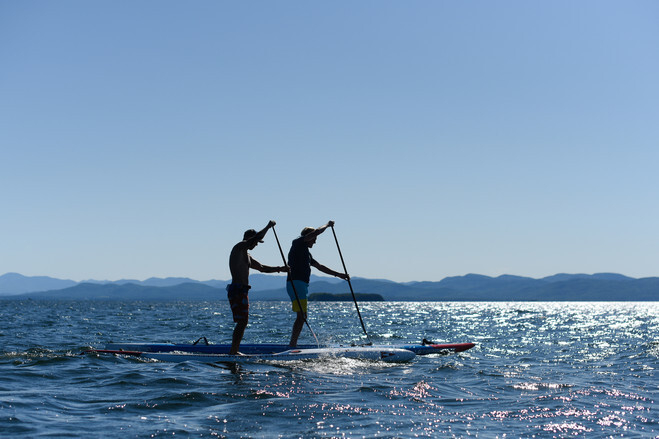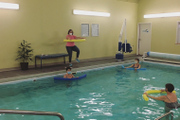Warming Up For A Day On The Water

This beautiful, hot weather we have had brings us great opportunities to get out on the water! Whether you like to lie on the beach, enjoy paddleboarding, kayaking, or swimming, working on our shoulders is essential to keep them healthy for these sports. Well, maybe not the lying on the beach part. Although sometimes holding those books and reading on the beach can be pretty fatiguing.
Sports like paddleboarding and kayaking require not only good balance to get on and off the board, but there are repetitive movements with the arms that can fatigue the shoulders quickly. Especially if you have a history of shoulder pain, there are exercises you can do to help reduce your pain. The exercises listed below can be performed before activity to help you properly warm up.
Thoracic rotations
Sit on the edge of a chair with your arms crossed over your chest. Inhale, rotate your trunk and neck as you exhale, looking behind you. You should feel a gentle twist in your spine. This will help warm up the upper spine and neck. Do 10 repetitions per side.
Shoulder rotations
Pin your elbows to your side and bend them to 90 degrees. With your palms up, rotate your forearms out to the side. These are often called “no monies” because it’s a similar motion when you’re trying to explain to your friend that you have no money! It strengthens your rotator cuff muscles. Do 20 repetitions.
Swimmer hugs
Made famous by Michael Phelps before starting his swim races, keep your arms loose and swing them in front of you like your hugging yourself with a little bit of force. These will warm up you pecs and gets you to move your arms dynamically! Switch which arm is on top and do about 20 repetitions.
Arm lifts overhead
Start with your arms raised in a scarecrow position. Reach overhead, then hands behind your head while keeping your elbows high, then back to overhead. This will get your ready for reaching up, especially if using a paddleboard paddle, which are relatively long. Do 10-20 times with rest as needed.
Stretching your lower legs and low back may also help to feel like you’re ready to go. Also, wear your PFDs (personal flotation devices)! Although the water may seem calm, you never know what kind of situation you can get into, so the most important thing is to stay safe.
Now, paddle on! Or read that book you’ve been waiting to all year. The choice is yours!


